Related Research Articles
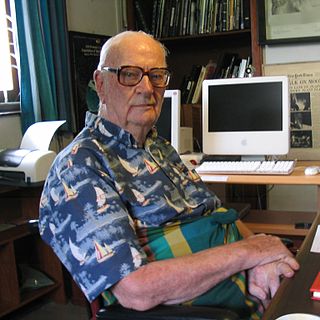
Hard science fiction is a category of science fiction characterized by concern for scientific accuracy and logic. The term was first used in print in 1957 by P. Schuyler Miller in a review of John W. Campbell's Islands of Space in the November issue of Astounding Science Fiction. The complementary term soft science fiction, formed by analogy to hard science fiction, first appeared in the late 1970s. The term is formed by analogy to the popular distinction between the "hard" (natural) and "soft" (social) sciences, although there are examples generally considered as "hard" science fiction such as Isaac Asimov's Foundation series, built on mathematical sociology. Science fiction critic Gary Westfahl argues that neither term is part of a rigorous taxonomy; instead they are approximate ways of characterizing stories that reviewers and commentators have found useful.

Childhood's End is a 1953 science fiction novel by the British author Arthur C. Clarke. The story follows the peaceful alien invasion of Earth by the mysterious Overlords, whose arrival begins decades of apparent utopia under indirect alien rule, at the cost of human identity and culture.
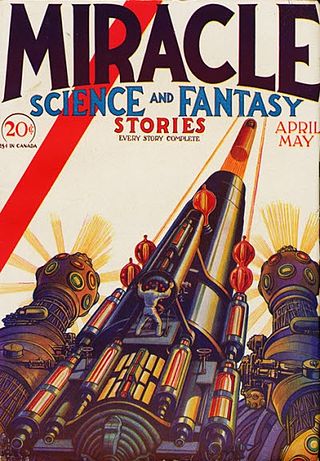
Science fantasy is a hybrid genre within speculative fiction that simultaneously draws upon or combines tropes and elements from both science fiction and fantasy. In a conventional science fiction story, the world is presented as being scientifically logical, while a conventional fantasy story contains mostly supernatural and artistic elements that disregard the scientific laws of the real world. The world of science fantasy, however, is laid out to be scientifically logical and often supplied with hard science-like explanations of any supernatural elements.

Reach for Tomorrow is a 1956 collection of science fiction short stories by British writer Arthur C. Clarke. All the stories originally appeared in a number of different publications.

Unknown was an American pulp fantasy fiction magazine, published from 1939 to 1943 by Street & Smith, and edited by John W. Campbell. Unknown was a companion to Street & Smith's science fiction pulp, Astounding Science Fiction, which was also edited by Campbell at the time; many authors and illustrators contributed to both magazines. The leading fantasy magazine in the 1930s was Weird Tales, which focused on shock and horror. Campbell wanted to publish a fantasy magazine with more finesse and humor than Weird Tales, and put his plans into action when Eric Frank Russell sent him the manuscript of his novel Sinister Barrier, about aliens who own the human race. Unknown's first issue appeared in March 1939; in addition to Sinister Barrier, it included H. L. Gold's "Trouble With Water", a humorous fantasy about a New Yorker who meets a water gnome. Gold's story was the first of many in Unknown to combine commonplace reality with the fantastic.

Tales from the White Hart is a collection of short stories by science fiction writer Arthur C. Clarke, in the "club tales" style.
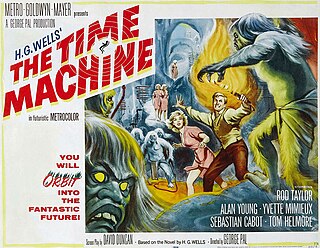
Time travel is a common theme in fiction, mainly since the late 19th century, and has been depicted in a variety of media, such as literature, television, film, and advertisements.
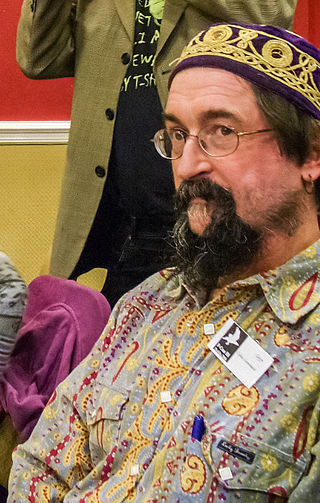
Colin Greenland is a British science fiction writer, whose first story won the second prize in a 1982 Faber & Faber competition. His best-known novel is Take Back Plenty (1990), winner of both major British science fiction awards, the 1990 British SF Association award and the 1991 Arthur C. Clarke Award, as well as being a nominee for the 1992 Philip K. Dick Award for the best original paperback published that year in the United States.
In science fiction, a time viewer, temporal viewer, or chronoscope is a device that allows another point in time to be observed. The concept has appeared since the late 1800s, constituting a significant yet relatively obscure subgenre of time travel fiction and appearing in various media including literature, cinema, and television. Stories usually explain the technology by referencing cutting-edge science, though sometimes invoking the supernatural instead. Most commonly only the past can be observed, though occasionally time viewers capable of showing the future appear; these devices are sometimes limited in terms of what information about the future can be obtained. Other variations on the concept include being able to listen to the past but not view it.
Michael Raymond Donald Ashley is a British bibliographer, author and editor of science fiction, mystery, and fantasy.

Tales of Wonder was a British science fiction magazine published from 1937 to 1942, with Walter Gillings as editor. It was published by The World's Work, a subsidiary of William Heinemann, as part of a series of genre titles that included Tales of Mystery and Detection and Tales of the Uncanny. Gillings was able to attract some good material, despite the low payment rates he was able to offer; he also included many reprints from U.S. science fiction magazines. The magazine was apparently more successful than the other genre titles issued by The World's Work, since Tales of Wonder was the only one to publish more than a single issue.
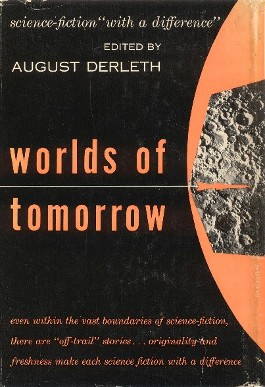
Worlds of Tomorrow is an anthology of science fiction stories edited by American writer August Derleth. It was first published by Pellegrini & Cudahy in 1953. Many of the stories had originally appeared in the magazines Worlds Beyond, Fantastic, Fantasy, The Magazine of Science Fiction, Fantasy and Science Fiction, If, Fantastic Adventures, Future, Startling Stories, Astounding Stories, Weird Tales, The Fantasy Fan and Thrilling Wonder Stories. Abridged editions were published by Weidenfeld & Nicolson in 1955, Berkley Books in 1958 and Four Square Books in 1963.
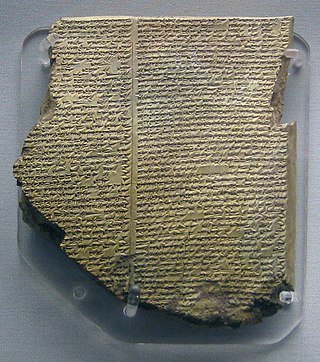
Immortality is a common theme in fiction. The concept has been depicted since the Epic of Gilgamesh, the oldest known work of fiction. Originally appearing in the domain of mythology, it has later become a recurring element in the genres of horror, science fiction, and fantasy. For most of literary history, the dominant perspective has been that the desire for immortality is misguided, albeit strong; among the posited drawbacks are ennui, loneliness, and social stagnation. This view was challenged in the 20th century by writers such as George Bernard Shaw and Roger Zelazny. Immortality is commonly obtained either from supernatural entities or objects such as the Fountain of Youth or through biological or technological means such as brain transplants.

Marvel Science Stories was an American pulp magazine that ran for a total of fifteen issues in two separate runs, both edited by Robert O. Erisman. The publisher for the first run was Postal Publications, and the second run was published by Western Publishing; both companies were owned by Abraham and Martin Goodman. The first issue was dated August 1938, and carried stories with more sexual content than was usual for the genre, including several stories by Henry Kuttner, under his own name and also under pseudonyms. Reaction was generally negative, with one reader referring to Kuttner's story "The Time Trap" as "trash". This was the first of several titles featuring the word "Marvel", and Marvel Comics came from the same stable in the following year.
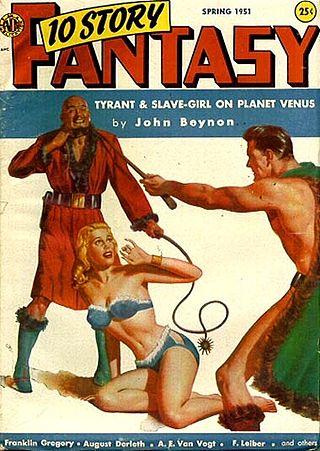
10 Story Fantasy was a science fiction and fantasy pulp magazine which was launched in 1951. The market for pulp magazines was already declining by that time, and the magazine only lasted a single issue. The stories were of generally good quality, and included work by many well-known writers, such as John Wyndham, A.E. van Vogt and Fritz Leiber. The most famous story it published was Arthur C. Clarke's "Sentinel from Eternity", which later became part of the basis of the movie 2001: A Space Odyssey.
"What Goes Up" is a science fiction short story by English writer Arthur C. Clarke, first published in 1956, and later anthologized in Tales from the White Hart. Like the rest of the collection, it is a frame story set in the fictional White Hart pub, where Harry Purvis narrates the secondary tale. The title is a reference to the common phrase "What goes up must come down".
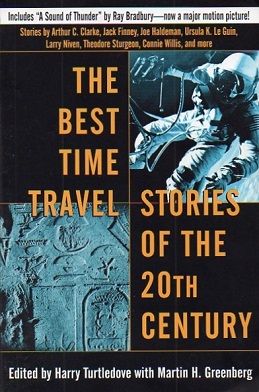
The Best Time Travel Stories of the 20th Century is an anthology of science fiction time travel short stories edited by Harry Turtledove and Martin H. Greenberg. It was first published in trade paperback by Del Rey/Ballantine in January 2005. The book has been translated into Portuguese.

Fantasy was a British science fiction magazine, edited by Walter Gillings, which published three issues from 1946 to 1947. Gillings began collecting submissions for the magazine in 1943, but the publisher, Temple Bar, delayed launching it until the success of New Worlds, another British science fiction magazine, convinced them there was a viable market. Gillings obtained stories from Eric Frank Russell, John Russell Fearn, and Arthur C. Clarke, whose "Technical Error" was the first story of Clarke's to see print in the UK. Gillings published two more stories by Clarke, both under pseudonyms, but Temple Bar ceased publication of Fantasy after the third issue because of paper rationing caused by World War II. Gillings was able to use some of the stories he had acquired for Fantasy in 1950, when he became editor of Science Fantasy.
References
- 1 2 3 The best time travel stories of the 20th century. Harry Turtledove, Martin Harry Greenberg. New York: Del Rey/Ballantine Books. 2005. ISBN 0-345-46094-4. OCLC 54693159.
{{cite book}}: CS1 maint: others (link) - 1 2 Nahin, Paul J. (24 December 2016). Time Machine Tales: The Science Fiction Adventures and Philosophical Puzzles of Time Travel. Springer. pp. 133, 239. ISBN 978-3-319-48864-6.
- 1 2 Clarke, Arthur C (1956). Reach for tomorrow; [stories. New York: Ballantine Books. OCLC 1629643.
- 1 2 Rabkin, Eric S. (1 January 1980). Arthur C. Clarke. Starmont House. pp. 53–54. ISBN 978-0-916732-21-9.
- ↑ John Wade (30 January 2019). The Golden Age of Science Fiction: A Journey into Space with 1950s Radio, TV, Films, Comics and Books. Pen & Sword Books. p. 253. ISBN 978-1-5267-2926-2.
- ↑ Mike Ashley, "New Worlds", in Tymn & Ashley, Science Fiction, Fantasy and Weird Fiction Magazines, pp. 423–437.
- ↑ Clarke, Arthur C (1959). Across the sea of stars: an omnibus containing the complete novels of Childhood's end and Earthlight and eighteen short stories. New York: Harcourt, Brace. OCLC 225641.
- ↑ "Title: Time's Arrow". ISFDb. Retrieved 20 February 2021.
- ↑ Westfahl, Gary (14 June 2018). Arthur C. Clarke. University of Illinois Press. pp. 35–36. ISBN 978-0-252-05063-3.
- 1 2 Nahin, Paul J. (20 April 2001). Time Machines: Time Travel in Physics, Metaphysics, and Science Fiction. Springer Science & Business Media. pp. 66, 235. ISBN 978-0-387-98571-8.
- ↑ Paul J. Nahin (20 April 2001). Time Machines: Time Travel in Physics, Metaphysics, and Science Fiction. Springer Science & Business Media. p. 66. ISBN 978-0-387-98571-8.
- ↑ Ashley, Michael (1974). The History of the Science Fiction Magazine: 1946–1955. New English Library. p. 64. ISBN 978-0-450-03051-2.